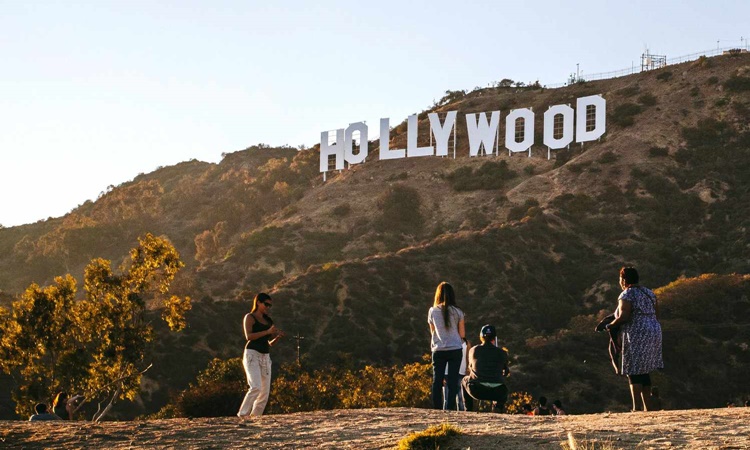Here Are 8 Things You Didn’t Know About the Hollywood Sign
HOLLYWOOD SIGN – Here are the eight (8) surprising facts about the American landmark, the Hollywood sign.
The Hollywood Sign not only serves as an iconic American landmark but also stands as a significant cultural emblem. Situated on Mount Lee in Los Angeles, this sign boasts dimensions of 45 feet in height and 350 feet in length.
Since its installation in 1923 on Mount Lee, the sign has remained a fixture, initially erected to promote local real estate development. However, its enduring popularity prevented its removal, leading it to become an integral part of popular culture. The Hollywood Sign has made appearances in numerous scenes in movies and television series based in Los Angeles.

Eight Things You Didn’t Know About the Hollywood Sign
1. The Hollywood sign is almost as old as the district itself, which was founded in 1887 as a community for advocates of the temperance movement. The origins of its name are uncertain, with theories suggesting it may have been inspired by a woman’s summer home or the abundance of toyon shrubs, also known as California holly, in the area. Hollywood was incorporated as a municipality in 1903 and merged with Los Angeles in 1910, just before the arrival of the first film studio.
2. This iconic sign began as a promotional tool for the Hollywoodland real estate development, initiated in 1923 by Los Angeles Times publisher Harry Chandler. The project capitalized on the rising fame of Hollywood as a hub for the film industry. To advertise the development, Chandler and his partners invested $21,000 (equivalent to over $250,000 today) to create massive 45-foot-high white letters, illuminated by 4,000 light bulbs, which flashed “Holly,” then “Wood,” then “Land,” and finally, “Hollywoodland” at night. Although newspapers from the era indicate the sign’s completion in 1923, the exact date remains disputed.
3. Despite symbolizing glamour and stardom, the Hollywood Sign also holds a darker side. In 1932, Peg Entwistle, a stage actress who had recently moved to Los Angeles to pursue a film career, tragically took her own life. Her unsuccessful acting career was cited as a contributing factor. Ironically, she received an offer for a lead role in a play about a young woman’s suicide just before her death.
4. Maintenance of the sign ceased during the Great Depression when the Hollywoodland development faltered. The “H” even fell, briefly spelling “Ollywoodland.” However, the Hollywood Chamber of Commerce stepped in when the city took ownership of the sign in the mid-1940s. They removed the last four letters, restoring the rest.

5. The Hollywood Sign faced further deterioration over the years, with the third “O” falling off and incidents of arson. In 1978, Hugh Hefner and eight other donors, including musician Alice Cooper, each contributed nearly $28,000 to fund a replacement. Construction concluded later that year, maintaining the sign’s original size but with structural enhancements such as steel footings. Periodically, it receives a fresh coat of white paint.
6. The Hollywood Sign has been the target of numerous pranks. In 1976, a group of students altered it to read “Hollyweed” to celebrate a law decriminalizing small amounts of marijuana. This prankster, Danny Finegood, continued to modify the sign multiple times for various causes, including political statements and protests. Other pranksters have targeted the sign before college football games or to show support for political candidates. Security measures, including cameras, razor wire, motion sensors, and microphones, have since been implemented, and public access to the site is restricted.
7. Business magnate Howard Hughes once owned land near the Hollywood Sign with plans to build a mansion for himself and actress Ginger Rogers. However, after their relationship ended, the plans were abandoned. The land remained dormant until 2002 when it was purchased by a Chicago-based investment firm. Movie studios, actors, and foundations raised funds to prevent luxury homes from being built there, ultimately turning it into protected parkland, with Hugh Hefner providing the final contribution.
8. The Hollywood Sign has been destroyed in several movies, often serving as a dramatic plot element. Films like Earthquake, Superman, and The Day After Tomorrow, suffer various fictional calamities, from falling letters to quakes and tornadoes. These cinematic depictions showcase the sign’s enduring presence in popular culture.

